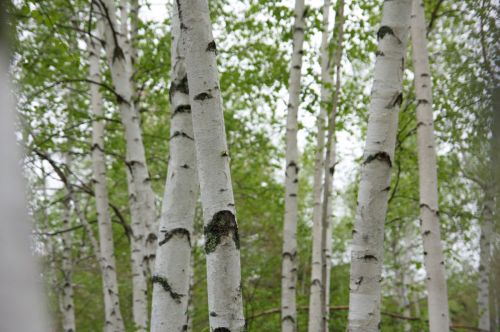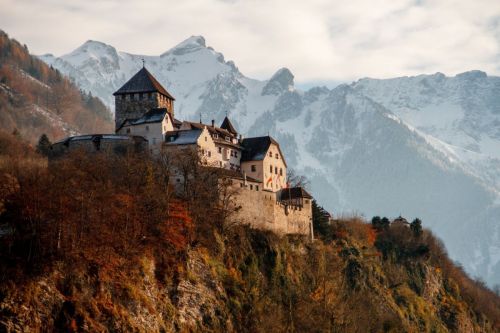The Czech Republic is a small, upland, and mountainous country in Central Europe, whose area is nearly 79.000 square kilometers. Just over 10.5 million people are living there, most of whom do not identify with any religion. It is a country with a highly developed market economy and great innovation. Known around the world for the production of trams, firearms, vinyl records, and fast internet. Gourmets are attracted by Czech beer and Knödels, lovers of monuments – magnificent castles and palaces, and winter sports enthusiasts – mountains, even though they constitute only 4% of the country’s area.
It is a unitary state - all units constituting the state are organized in the same way and subordinated to the central authorities.
The population exceeds 10.6 million and the population density is 134 people/km2.
93.7% of the population are Czechs, 4.9% Moravians, and 1.4% Slovaks.
It borders Poland to the north, Germany to the west and north-west, Austria to the south, and Slovakia to the east.
The country has (since 2000) a four-level administrative division into 14 countries: 204 third-degree communes, 384 second-degree communes, and 5661 first-degree communes.
It is the only separate city with the status of a country. Prague is located in the western part of the Czech Republic, in the central part of the Czech Republic, on the Vltava River. It is an administrative, industrial, trade and service, academic, tourist, and cultural center of international importance. It is the seat of the Czech parliament, president, and government.
Due to its many attractions, Prague is one of the most frequently visited European cities. In 1992, its historic center was included on the UNESCO World Heritage List.
Many famous people were born in Prague, including Jaroslav Hašek, Vaclav Havel, Franz Kafka, Charles IV of Luxembourg, Josef Manes, Wenceslaus II - King of Bohemia and Poland, Wenceslaus III - King of Bohemia and Hungary, uncrowned king of Poland.
The head of state is the president, elected in general elections for a five-year term since 2013. The legislative body is a bicameral parliament, consisting of the lower house of parliament (200 parliamentarians) - the Chamber of Deputies, and the upper house - the Senate (81 senators).
The Czech Republic is a member of many international organizations, including the UN, NATO, the European Union, the Schengen area, the Council of Europe, the OECD, and the Visegrad Group.
Since 2019, the vice-president of the European Commission has been a Czech, Vera Jourova. She is responsible for values and transparency. During her function in the European Commission, she questioned political changes in Poland and Hungary and supported a stronger link between European funds and the rule of law (in 2020, Viktor Orban demanded her resignation, considering her criticism offensive).
The percentage of Czech residents living below the poverty line is negligible. Unemployment there has been low for a long time, well below the average in developed countries. There is relatively little income inequality between the richest and poorest citizens.
The Czech Republic is the 10th safest country in the world in terms of the threat of war and the occurrence of physical crime (the survey was conducted before Russia invaded Ukraine on February 24, 2022).
According to the corruption index in 2015, the Czech Republic was in 10th place among the European Union countries (study conducted by Transparency International).
It comes from the name of the West Slavic ethnic group originating from the Czech lands - the Czechs, who settled in these areas in the 6th or 7th century. It means the westernmost and largest historical region of the Czech lands and the modern Czech Republic.
The Latin, medieval name of the Czech Republic - Bohemia (Boiohaemum) comes from the Boii, a Celtic tribe inhabiting this area before the arrival of the early Slavs. Bohemus - a resident of the Czech Republic, was later used to describe Gypsies who, as it was believed, came from the Czech Republic
The crown of Saint Wenceslas, which is a national relic and an unofficial symbol of Czech statehood and sovereignty, is particularly respected there. The Crown of Saint Wenceslas (Svatováclavská koruna) is a coronation insignia, the crown of the rulers of Bohemia from 1347 to 1836. It is kept in the Cathedral of Saints Vitus, Wenceslaus, and Adalbert in Prague. The crown contains a thorn from Christ's crown brought from Paris.
The symbol of the Czech Republic is also the linden tree, whose leaves are depicted, among others, on the state seal and banknotes.
The most famous culture present in the Czech lands in the prehistoric era is the Unetic culture, which developed in these areas for about five centuries. In the 5th century BC, the Celts came there, and one of their tribes was the Boii. They gave the Czech lands the name Land of Boii, which in Latin is Boiohaeum. At the beginning of our era, the Celts were displaced by Germanic tribes. The most famous Germanic tribe was the Marcomanni, and traces of their wars with the Roman Empire remained in southern Moravia.
The first known state in Czech lands was established in 623, when Samo (a Frankish merchant who united several Slavic tribes) and was elected "Slavic king" (Rex Sclavorum), successfully defended his kingdom against the Franks in the three-day Battle of Wogastisburg.
The next state that appeared on Czech lands after the dissolution of the Samo state was probably Great Moravia. The center was located in Moravia and today's western Slovakia. In 863, Cyril and Methodius, two Greek scholars, brought Christianity to Great Moravia and established the first Slavic writing system, the Glagolitic script. Great Moravia fell during the Magyar invasion in the early 10th century.
The Přemyslid dynasty died out at the beginning of the 14th century and was replaced by the Luxembourg dynasty. The most famous of Luxembourg's rulers was Charles IV, elected emperor of the Holy Roman Empire. He founded the Archbishopric of Prague and Charles University, the first university north of the Alps and east of Paris.
The execution of Jan Hus (Church reformer, a leading figure of the Czech Reformation) triggered the Hussite Wars and the subsequent religious split.
In 1471, the Jagiellonian dynasty ascended the Czech throne and ruled for half a century, handing over the throne to the Habsburgs. After the death of Emperor Rudolf II Habsburg, religious and political tensions increased, resulting in the second defenestration of Prague, which initiated the Thirty Years' War. Germanization and re-Catholicization of the Czech lands took place.
After 1848, leading representatives of the Czech National Revival increased their political efforts to obtain greater autonomy for the Czech lands within the Habsburg Monarchy.
The outbreak of World War I opened the possibility of gaining full independence and establishing a sovereign state. In 1915, representatives of the Czech Republic and Slovakia declared their goal to create a common state based on the people's right to self-determination.
After the surrender of Austria-Hungary three years later, the Czechoslovak Republic became a reality. It lasted 20 years (the so-called Second Polish Republic) and ended with the outbreak of World War II.
Czechoslovakia became a member of the Eastern Bloc. In 1968, Warsaw Pact armies invaded the country to prevent further attempts to reform the communist system.
In late 1989, the Velvet Revolution replaced the communist regime with the democratic Czechoslovak Federal Republic. One of the opposition leaders, Vaclav Havel, became the first president of democratic Czechoslovakia. In 1992, representatives of the Czech Republic and Slovakia agreed to dissolve Czechoslovakia and create two separate states: the Czech Republic and Slovakia.
The current Czech Republic was established on January 1, 1993. In 1999, the Czech Republic became a member of NATO and in 2004 a member of the European Union.
In the west of the country, there is the Bohemian Massif, which is a quadrangular block with raised edges, forming mountain ranges exceeding a height of 1000 m above sea level. In the east, there is a part of the Carpathians, which is divided into the White Carpathians, Jaworniki, and the Moravian Beskids, where the highest peak is Lysá hora (1324 m above sea level).
The Bohemian Massif is separated from the Carpathians by the Morava River basin, which connects to the Danube Plain.
When the Czech mountains were rising, there was volcanic activity, the remains of which today are numerous chimneys and volcanic flows, ashes, and springs of mineral and hot waters. There are thermal springs in Karlovy Vary and Mariánské Lázně.
The largest catchment area is the North Sea, covering 51.399 square kilometers, while the smallest is the Baltic Sea - 4721 square kilometers.
The longest river flowing through the Czech Republic is the Elbe, which is 370 km long within the country's borders. Its longest tributary is the Vltava, which flows through the country's capital - it belongs to the North Sea basin.
The longest river in the Black Sea basin is the Morawa, which is 246 km long. The Baltic Sea catchment area includes the Oder, which has its sources in the Czech Republic, and within the borders of this country, its length is 135 km.
The largest is Lake Czarne, with an area of only 18.4 ha. However, numerous ponds and retention reservoirs protect the country against floods.
The Czech Republic is known for its spa towns with mineral waters and hot springs, e.g. in Karlovy Vary (73°C) or Mariánské Lázně (29.6°C).
They include 4 national parks, protected landscape areas, 891 reserves, and 1297 natural monuments. Five sites have the status of world biosphere reserves.
It has a GDP per capita of 91% of the EU average. The Czech Republic ranks 12th in the UN ranking taking into account inequalities in human development and 24th in the World Bank's Human Capital Index.
The Czech Republic ranks 27th in the 2021 Economic Freedom Index, and 41st in the Ease of Doing Business Index.
The Czech Republic is the world's largest producer of vinyl records - GZ Media produces approximately 6 million units a year in Lodenice.
Ceskaarmovka is one of the ten largest firearms producers in the world and five producing automatic weapons.
As of 2020, the country has 9542 km of lines. The length of the tracks is 15.360 km, of which 6917 km are electrified.
Six of them provide international air services. The main international airport in the country is the airport. Vaclav Havel in Prague, which served 17.8 million passengers in 2019.
The Czech Republic has a long and well-documented history of scientific innovation, ranking 24th in the Global Innovation Index in 2020 and 2021.












